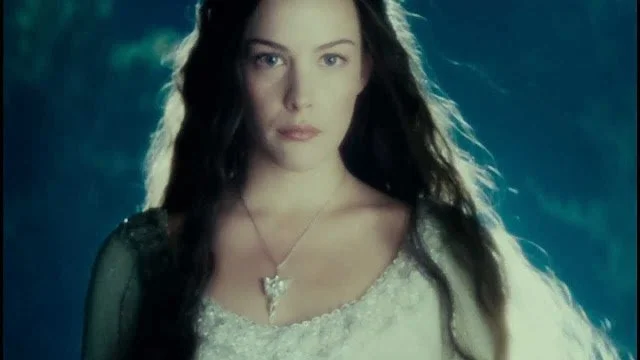What Is In The Appendices Of ‘The Lord Of The Rings’?
When The Lord of the Rings Amazon series was first announced to be in the works, there were many speculations about where the series would take place in the lore and timeline of Middle Earth. The most obvious answer that fans came to was that the series would be taking place earlier in the narrative, before the events of The Hobbit and The Lord of the Rings. J.R.R. Tolkien wrote extensively about the early ages of Middle Earth, and there were a lot of good stories to pull from for screen adaptation. Plus, some of the characters (or ancestors of the characters) that we have met on screen and have come to love could be included in the narrative.
Amazon confirmed that the show would indeed be taking place before the events of the beloved stories already brought to screen. This, of course, fueled rumors about which sections of The Silmarillion, Tolkien’s more finished famous “prequel” work would be included. The Silmarillion spanned centuries and was full of rich content and characters. It only made sense that Amazon would focus on it. This made a lot of people excited and many fans uneasy. However, with the release date looming closer and closer and rumors running amok, Amazon released the teaser trailer and news that Lord of the Rings: The Rings of Power would not in fact be based on the events in The Silmarillion at all since they did not actually have the rights to that book per the Tolkien Estate. The events in the series would instead be based on the appendices at the end of The Return of the King. This news rocked the world as fans tried to grapple with this new development. Many people began to wonder about the appendices. What was actually in the appendices and what could we expect to see in The Rings of Power?
RELATED: Amazon's 'LOTR' Series Reveals This Shocking Truth About The Teaser Trailer
The appendices covered the events that happened mostly in the Second Age and into the Third Age of Middle Earth. The great Dark Lord Morgoth had just been defeated, although Sauron was still lurking in the shadows. So, in the upcoming series, we would not see anything prior to Morgoth, or most likely Morgoth himself at all. In fact, Amazon said that they would be focusing on Sauron’s rise to become a Dark Lord as one of the main villain storylines. The events in the appendices featured events all the way up to The Hobbit and even before with Aragorn and Arwen’s origin story. The appendices comprised of six parts: Appendix A – F. Each part focused on a different aspect of Middle Earth, from history, specifically Hobbit and Dwarven histories, to the languages of Middle Earth.
In Appendix A, we got most of the history of Middle Earth in the Second Age. It started with a history of the Númenórean kings, the ancestors of the men and women of Gondor. The section listed the lineage of the kings of Númenór and followed the history of Númenór and King Ar-Pharazôn who challenged the Dark Lord Sauron. Sauron challenged the Valar (the “angelic powers” of Middle Earth) in the Undying Lands, triggering Númenór’s destruction and fall into the sea. Elendil, one of the most famous Tolkien characters, escaped the destruction and fled to Middle Earth where he founded the cities of Gondor and Arnor. There is a good chance we may get to see Elendil in The Rings of Power along with his son Isildur, who, of course, was famous for cutting the One Ring off of Sauron’s finger and not casting it into Mount Doom.
Then, Appendix A listed the line of kings of Isildur and Anárion’s (Elendil’s other son) heirs. Eventually, the line of kings failed and Arnor in the north fell (Weathertop was one of its old watchtowers). From then on, Gondor was ruled by stewards (all the way down to Denethor, Boromir and Faramir’s father). It also talked about the Dúnedain, the men of Númenór, and their descendants. Then, we touched on the story of how Aragorn met Arwen and fell in love.
Appendix A also had a brief history of the House of Eorl, how Rohan came to be and a brief history of Durin’s folk, how the dwarves came to be, as well as what happened in Moria with the Balrogs and the line of Dwarf kings. It also focused on the passage of the Rings of Power that were given to the Dwarf lords, which, given Amazon’s title, would probably be featured prominently in the series.
Appendix A had the bulk of stories spanning over hundreds of years of Middle Earth, and there were a lot of materials that Amazon could use. Because it was mostly a “brief” summary, there were gaps that Amazon could fill in. Showrunners J. D. Payne and Patrick McKay have said that they have filled in a lot of the story. Whether this would stay true to what was written in the appendices remained to be seen. There were also so many characters listed that may or may not show up in the series. If you want to get a good grasp of what Appendix A had and what could be featured in the series, give it a read before the September release date of The Rings of Power.
Appendix B was also important for following what events actually took place in the Second and Third Age of Middle Earth. It gave a chronology of the entirety of Middle Earth, focusing on key characters, giving brief summaries (that were expanded upon in some of Tolkien’s Unfinished Tales), and giving the reader a sense of where the famous events/battles/and forging of the Rings of Power happened in the timeline. It also talked about the Istari, which were the wizards like Gandalf, Saruman, and Radaghast. It talked about how the Rings of Power were made and who received them. There was also a timeline of the events in The Lord of the Rings as well as what was happening elsewhere in Middle Earth in the same time period.
Appendix C was very short and just featured drawn-out family trees for the various Hobbit clans, specifically, the Bagginses, Tooks, Brandbucks, and the Longfather (which Sam is a part of). Will we see some of these ancestors in the series? Who knows. We do know that at least the Harfoot clan would be in the series.
Appendix D focused on the Shire Calendar. The Númenóreans altered the calendar taken from the Eldar (the elves) and created their own calendar. The Hobbits then based their calendar off of the Númenóreans’.
Tolkien was a master of world-building so much so that instead of just creating some elven or dwarven words he decided to create a whole language. And he did, complete with grammar, consonants, vowels, and runes. Appendix E focused on these languages: Common (Westron), Quenya (Elven), and Dwarven. He even went into the history of the languages and how they evolved. There were others that he worked on as well, just not quite in-depth as Quenya, which was probably his most famous language.
Appendix F looked at the languages and peoples of the Second and Third Age specifically, starting with the Elves, Men, Hobbits, and other races like Orcs and Dwarves. It discussed their languages, touched on a little more history and characters, and went into even more depth on Hobbit, Dwarven, and even Orc lore. It also talked about where the Hobbits and the other races got their names. Much of Appendix F could also be featured in The Rings of Power.
It is safe to say that The Rings of Power has quite a lot to work with, even if a lot of the appendices are summaries of history. These summaries are filled with characters, places, and events that happened in the Second Age. Tolkien was a master at world-building and had created a whole history, not just background information, for his stories. Even though the series would not be about The Silmarillion, that should not stop fans from still being excited (or cautiously optimistic). The appendices are rich with information and had so much to them as well. It is sure to be quite the epic tale.
READ NEXT: Could This Character Show Up In Amazon's 'The Rings Of Power'?
Source(s): The Return of the King, The One Wiki to Rule Them All, Tolkien Gateway





